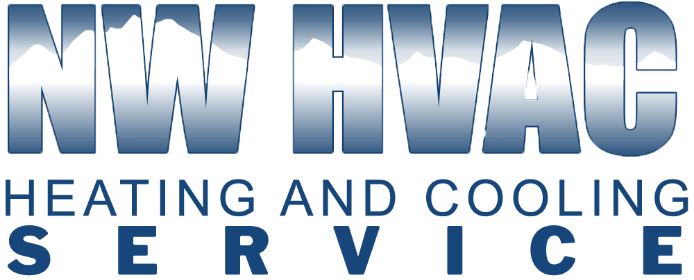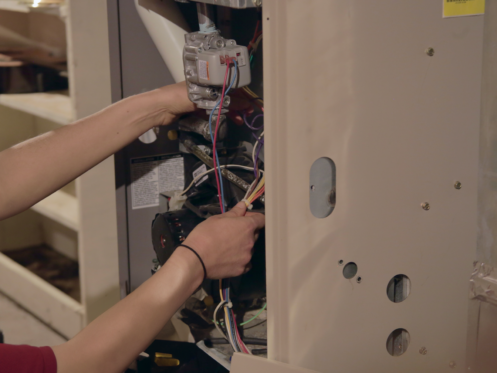\Standard-efficiency furnaces will run heating cycles that last 10 to 15 minutes, with an average of two or three cycles per hour. High-efficiency furnaces can run much more often but at a reduced capacity. In either case, your furnace won’t heat your home properly if it’s constantly turning off and back on. Consider these seven reasons why your furnace may keep turning off and on, also known as short cycling.
1. Neglected Air Filter
Neglected and clogged air filters are the culprits for many issues with furnaces. In order for your furnace to work properly, air must be drawn into the system. It is then heated and pushed back into your home. When the air filter gets clogged, it prevents air from flowing freely into the system, causing the system to build up heat. This trips the upper limit switch, causing the system to shut down.
To prevent this from occurring, plan to check your filter every month. When it becomes visibly dirty, it’s time to replace it with a new one. For the common 1- and 2-inch filters, this is usually every 30 to 90 days.
2. Worn Flame Sensor
The flame sensor is an important safety component that detects heat in the burn chamber. If the sensor doesn’t detect heat, it signals for the furnace to shut off the gas coming into the chamber to prevent a dangerous buildup.
This sensor can get worn and dirty over time. If you haven’t had your furnace tuned up every year, it may have a buildup of soot on it, preventing it from registering heat properly. Annual furnace maintenance is the best way to prevent an issue with the flame sensor.
3. Clogged Flue
The flue is the pipe that moves exhaust through your roof and outside. It’s common for these pipes to become clogged with everything from bird nests to debris. Whatever causes the clog, it prevents the exhaust from escaping, which causes heat to build up in the system. This triggers the high-limit switch.
4. System Overheating
While the purpose of your furnace is to create heat and distribute it around your home, it can overheat. The problem with overheating is that it can cause damage to the heat exchanger, causing it to crack and leak carbon monoxide into your home.
Aside from airflow restrictions at the flue and air filter, there are other sources of overheating. These may include maladjusted burners and a faulty or burnt-out blower motor.
5. Old, Faulty, or Misplaced Thermostat
The expected lifespan for a digital thermostat is between 10 and 15 years. Once it exceeds this age, the electrical sensors that control when your furnace cycles on and off stop working as well. If the thermostat is faulty or isn’t placed properly, it may register too much heat too quickly. The result is shorter cycles that run more frequently. Keep your thermostat on an interior wall out of the direct line of any supply vents and out of direct sunlight.
6. Airflow Restrictions
Other airflow restrictions can also cause the system to short cycle because of built-up heat. The next most common form of airflow restriction is blocked or closed air ducts.
To prevent this issue from occurring, make sure that all of your vents are open, even in areas of your home that you may not use frequently. Aside from being open, each vent needs the proper amount of clearance. This is usually about 6 inches above and around it. You may find vent deflectors helpful if you have furniture directly above the vent. They help direct air out of the vent rather than it coming up directly from it.
7. Oversized Furnace for Your Home
If you’ve recently had your furnace replaced, you may have made the mistake of installing an oversized furnace in your home. An oversized unit will create more heat than the system can effectively absorb and distribute throughout your home. This results in too much heat remaining in the heat exchanger. The system will experience short cycling.
For more than 25 years, people around Vancouver have trusted Northwest HVAC Heating & Cooling to keep their homes comfortable. Our team provides AC and heating repair, maintenance, and installation. This includes ductless heat pumps, and indoor air quality solutions. Call to schedule your furnace repair appointment with one of our NATE-certified technicians today.






